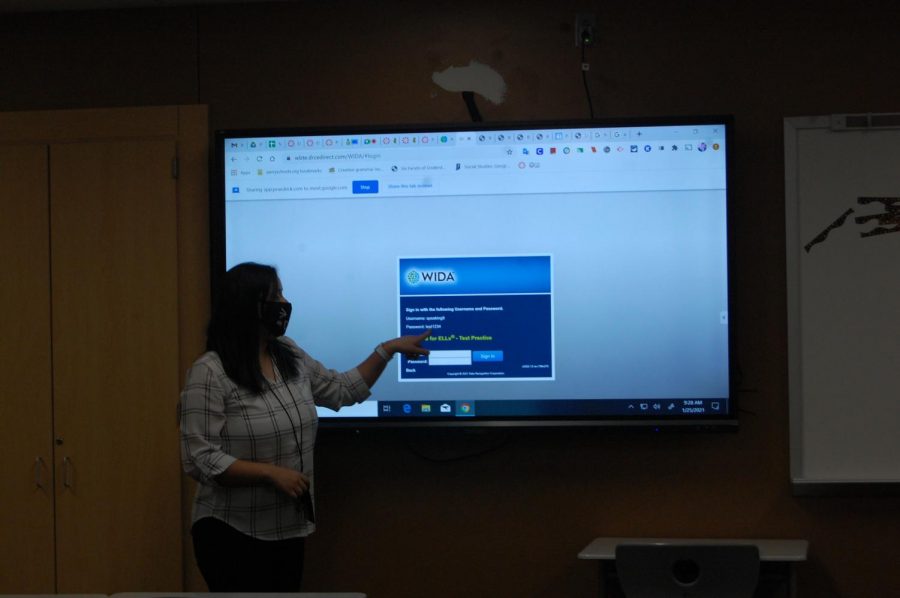A telling test
EL students get ready to take the WIDA test
El maestro de EL, Al-Adwadh, muestra a los estudiantes cómo tomar el examen WIDA. El propósito de WIDA es ayudar a los estudiantes a saber cuánto ha mejorado su inglés y darles a los maestros una idea de cuánto puede manejar cada uno de sus estudiantes EL.
In a normal year, World-Class Instructional Design and Assessment, also known as WIDA, testing for EL students is a big part of the end of their year. Students are measured and tested on their proficiency in all aspects of the English language through speaking, listening, reading and writing assessments.
“They would probably spend about 30 to 40 minutes on the listening part,” EL teacher Hiba Al Awadh said. ”Then, you would do all the other parts in order. They would pretty much spend the entire day taking that test. And to be honest, it is exhausting.”
The students are given a score of a number from one to six, with six being the highest score achievable. These scores are used to determine whether EL students are proficient enough in English to be moved out of their EL class, as well as to determine their abilities while in school. However the WIDA testing has changed due to the pandemic, and student preparedness has decreased.
The purpose of the WIDA testing is to help students get an idea of how much their English has improved, and to give teachers an idea of how much each of their EL students can handle. This allows for them to adjust their teaching and their assignments if needed.
Due to Covid-19, the schedules for the testing have had to be adjusted, and when the students take each portion of the test has changed. Students have also not had as many opportunities to increase their skills, and have not had as much practice.
Al Awadh thinks that the changes that have come from this year will greatly affect the students in their testing. She says that not only has missing their EL classes affected the students, but missing all their other classes as well.
“An EL student doesn’t only get their language in an EL class,” Al Awadh said. “They are getting their language everywhere around them, in all their other classes, with all their other teachers, as well as with their classmates. So, again, doing all of these things on a daily basis, that’s kind of their preparation throughout the year.”
To further complicate their circumstances, this year, all testing will be held on three consecutive Wednesdays, Feb. 17, Feb. 24 and March 3.
“We are going to do the testing on Wednesdays,” EL teacher Hoffmann-Longtin said. ”Because we are already taking so much class time away from students, we have decided as a school to do the testing on the days where nobody else is in the building.”
Even though students have not had as much practice this year, the grading scale of the test will be the same as any other year. So though there isn’t a specific way to study for the test, Al Awadh says it is still important for students to prepare.
“Talk to your EL teachers,” Al Awadh said. “They will be able to give you more specific advice based on your level. Every student is going to have a different need based on their level, so talk to your EL teacher, ask them what you can do to prepare, and that should probably help a little bit.”
Though preparing for the test is important, Hoffmann-Longtin thinks that remaining calm and understanding the purpose of the test is very important as well.
“Take a deep breath,” Hoffmann-Longtin said. “Try to relax. Know that we are testing you at your level… Where you test is where you test. The only thing you could possibly do to prepare for it is to try your best to understand that. “

Hey everyone! My name is Megan Rogers and I am one of the Managing Editors of The Journal this year! I will be working with our News, Sports, Culture and...








